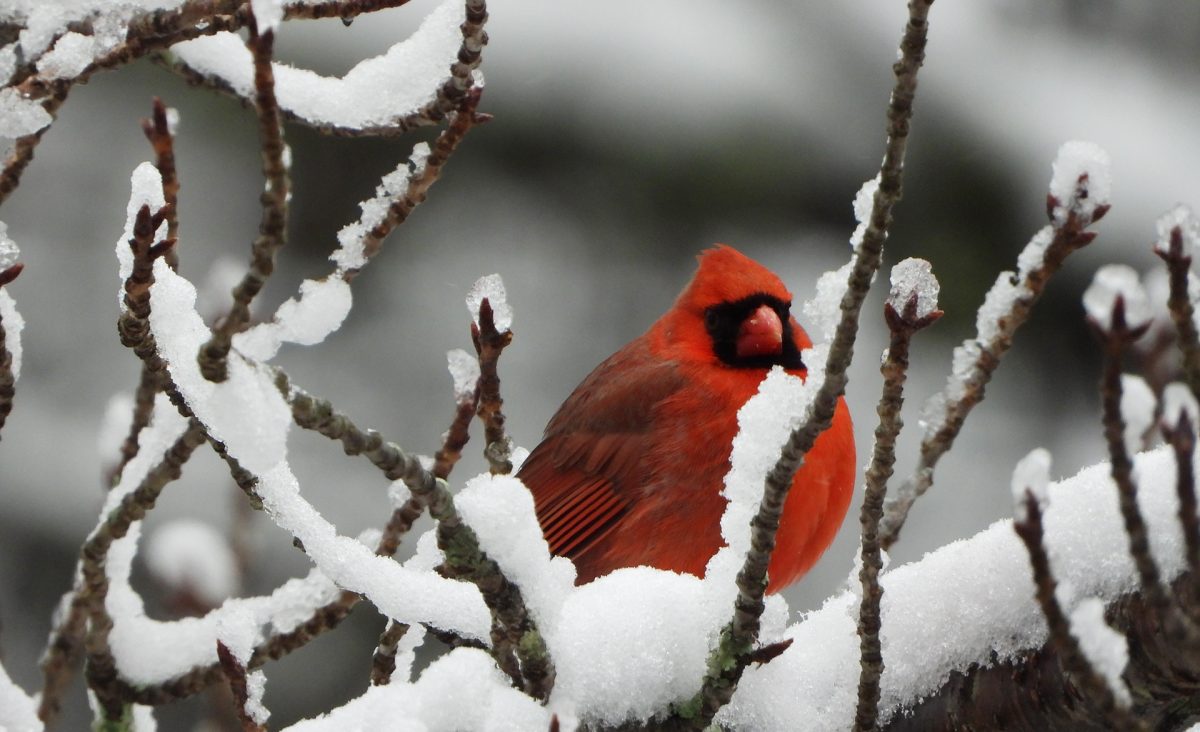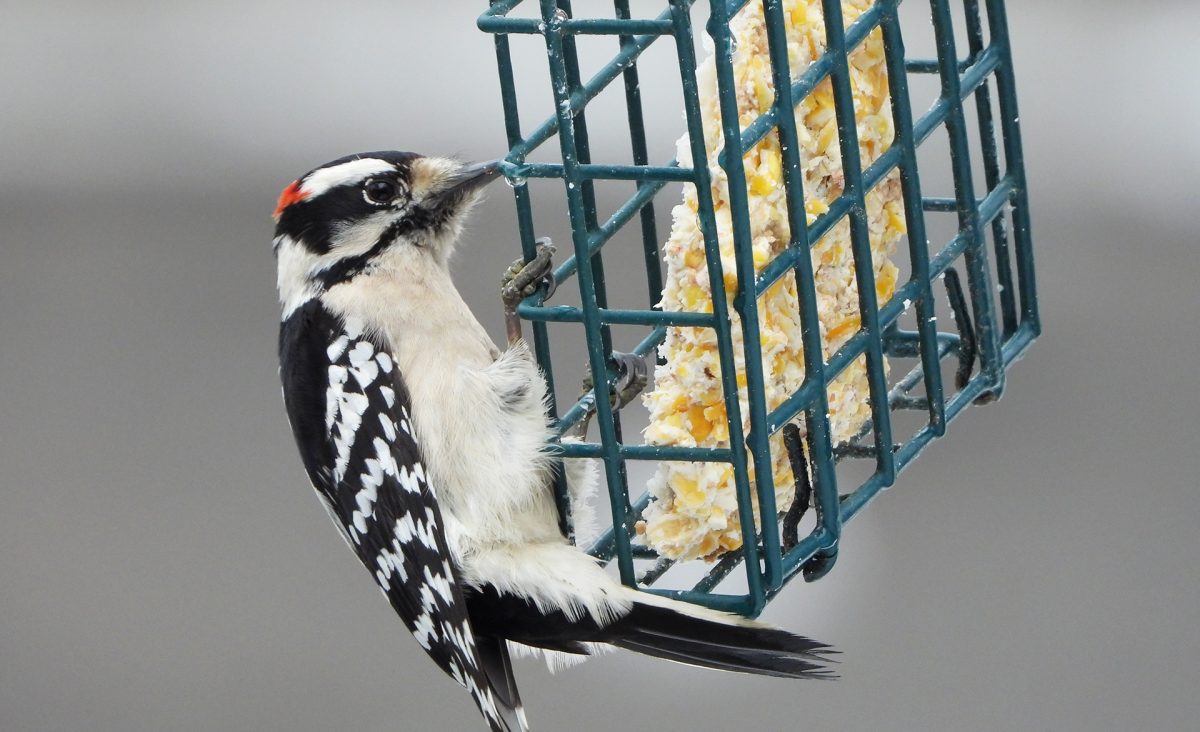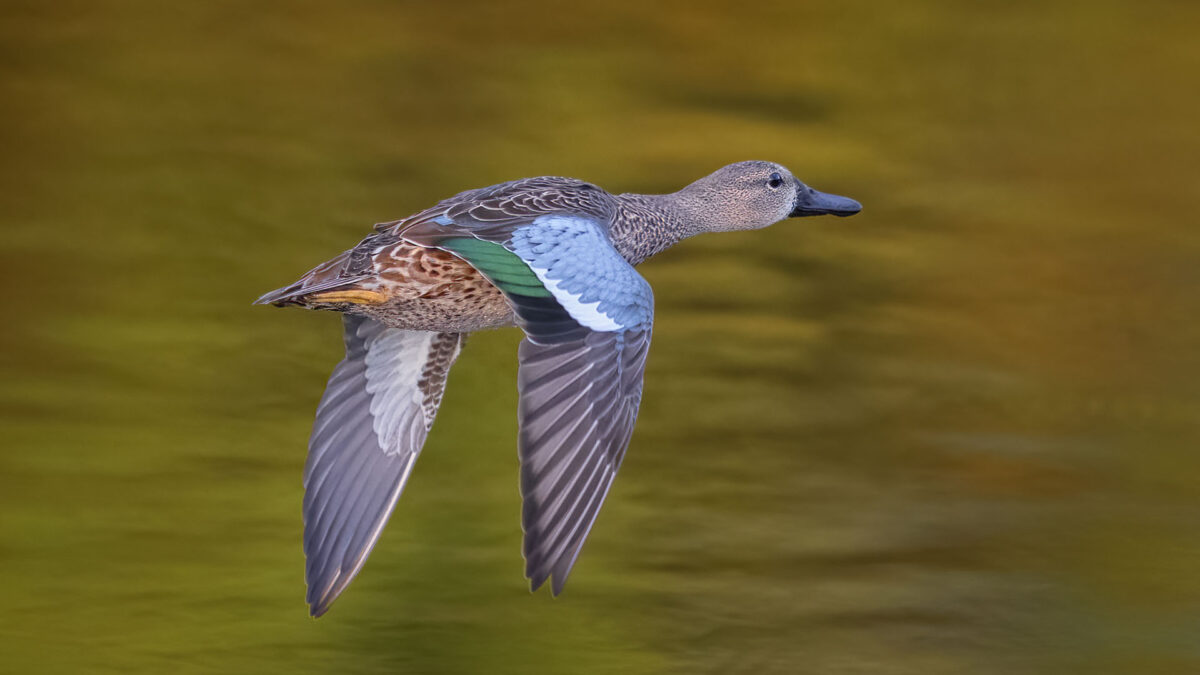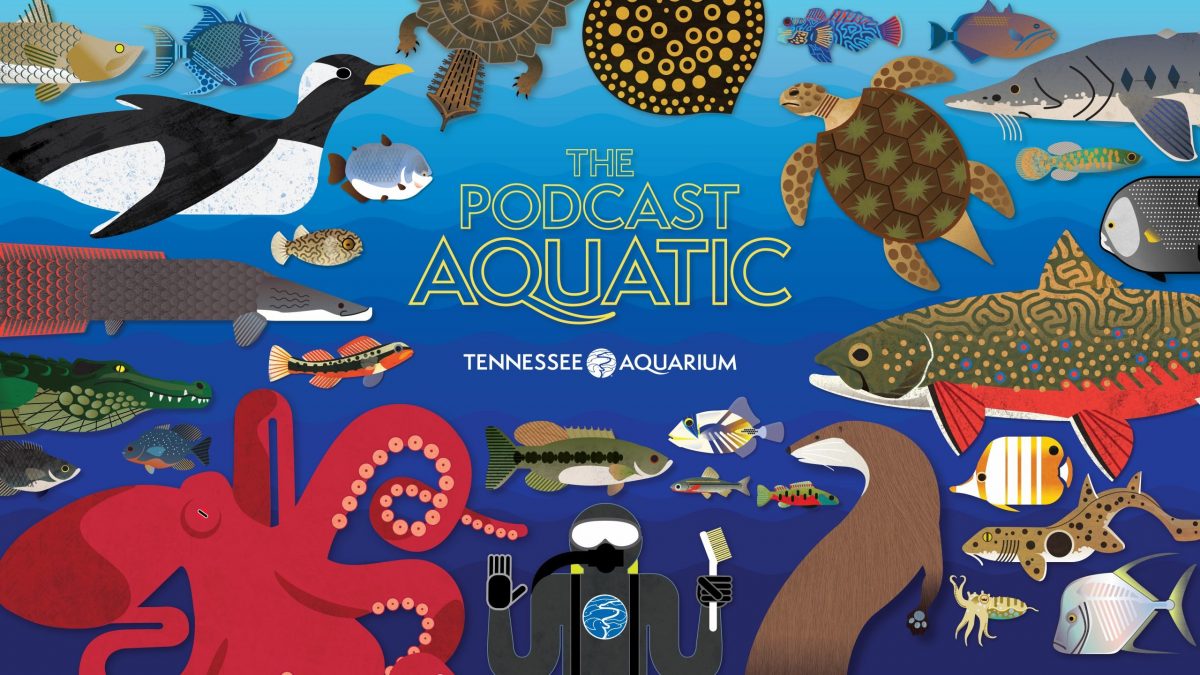Southeast Tennessee is among North America’s most biologically diverse regions. If you’re an animal lover with a yard, it’s only natural to want to make it more enticing to the wildlife living and migrating through this lush part of the country.
In honor of National Bird Feeding Month, here are some tips from the Aquarium’s curator of forests (and bird expert) Kevin Calhoon for making your backyard more inviting for visiting animals.
Provide quality food and, more importantly, water
The tried-and-true way to invite birds into your backyard is to appeal to their stomachs. Avoid the cheaper and less-nutritious white-lined sunflower seeds usually eaten by humans and look for black oil sunflower seeds. This type of seed is a favorite for finches, chickadees, nuthatches and woodpeckers, and it should be provided in a hanging feeder.
While you can hang your bird feeder from a tree branch, it’s a sure way to make the feeder an easy target for squirrels. A shepherd’s crook that can be embedded into the ground is an alternative that is harder for squirrels to access and easier to place in your yard, which means you can position it in an ideal viewing spot.
Calhoun stresses you shouldn’t go for the cheapest option when it comes to feeders. Quality feeders might be pricey, but you’ll save money in the long run because they last longer. Look for a feeder that is easy to clean or even dishwasher-safe. Cleaning your feeder regularly is essential for preventing the spread of disease among wild bird populations.
If you’re hoping to attract species like sparrows, you’ll want to find a wild bird seed that includes millet, milo and cracked corn. These species prefer to scavenge for food on the ground and don’t like to perch on feeders. To keep them happy, construct a small, raised feeding platform out of plywood on which you can spread seed for them to munch.
If you’re hoping to attract birds that don’t eat seed, you’ll want to put out suet. Made from animal fat, this type of food will attract birds like woodpeckers and Pine Warblers.

Providing water for wild birds is even more important than food in winter. When colder temperatures freeze available water sources, birds can suffer from dehydration. Calhoun says if you can provide fresh flowing water, you’ll be amazed how many birds you’ll attract.
A shallow birdbath with a garden hose drip attachment and a small heater or circulating pump is perfect for attracting birds in the winter. The heater or pump prevents the water from freezing, and the sound will draw in thirsty birds. “They’re listening for water dripping,” Calhoun says.
You also want to make sure that there is at least one shallow section in the birdbath. Large birds like Blue Jays and Mockingbirds can use deeper baths, but smaller birds need an inch or less of depth.
Make your yard more inviting
Attracting birds and other wildlife to your backyard isn’t just about keeping them fed. It’s also essential to offer inviting habitats that make them feel safe and secure.
Try planting native plant species, suggests Calhoun. Hackberries, mulberries and dogwoods are all great tree choices for bringing native birds to your yard. Fruiting species like Tulip Poplars or blackberry and blueberry bushes are also great choices for attracting birds. Native avians know these plants and will naturally gravitate to them as additional sources of food and shelter.
If you have a wooded area nearby, consider leaving behind dead trees or snags if it’s safe to do so. Woodpeckers, Brown-headed Nuthatches, White-breasted Nuthatches, Bluebirds and Chickadees all like to nest in dead trees.
It’s also helpful to leave an un-mowed buffer zone of about ten feet between your yard and the woods. By allowing this area to grow wild, you’re creating additional habitat in which ground-dwelling birds and animals can hide and forage.

When feeding hummingbirds, it's important to use only sugar water with no added dyes.
“My small pond brings all the deer to the yard”
Making your yard more hospitable won’t just attract birds. If you create suitable habitats, you’ll begin to see all sorts of animals.
Ponds are a great way to appeal to mammals like Raccoons, White-tailed Deer, Wild Turkey and Virginia Opossum. Wild animals are always searching for water, so having a readily available source in your backyard is sure to attract more visitors.
Not everyone likes snakes, but there are plenty of reasons to want them hanging around your property. They help control insect and rodent populations. Some, like King Snakes, even eat other snakes.
If you’re a reptile-lover who would like to see more snakes in your yard, Calhoun suggests laying down sections of metal roofing material for reptiles to use for sunning themselves during cold weather. The metal sheeting will also attract rodents like Voles, as well as invertebrates and salamanders.
Calhoun also recommends leaving behind some of your leaf litter in the fall. What looks like an unsightly mess to humans is in fact an ideal habitat for insects, amphibians and small mammals like Eastern Chipmunks.
A balanced yard is a happy yard
As you build a backyard that’s more inviting to wildlife, remember that nature is a balanced system, one in which each animal and plant plays a role. By keeping a yard that provides food, shelter and water for predators and prey, alike, you’re helping to preserve that balance while enjoying the wonder of the natural world around us.


